Travelogue

Drawn up by Latis Vetalar after his
overseas travels
From observations in a natural environment In the hot climate of the desert Sakhara there are many species of dangerous creatures. And one of them is oronox, which desert dwellers
call «sahli alish» which means a feathered lizard on their language. However, unlike real lizards, oronoxes don’t go dormant at night, thus it seems their blood is warm, just like a bird that they resemble.
They are pretty tall, taller than a horse, and use only their hind feet for moving. They don’t have wings but forelegs which are shorter than legs. Nonetheless, both their forelegs and hind feet are equipped with huge claws, which are used when attacking. Another terrifying weapon they have is a beak. The body is covered with plumage.
Oronox females are smaller than males, having a monotonous dark color. Males, for their part, are large and very aggressive, they have brightly color especially tales reminiscent of a rooster. The plumage of Oronox cubs is sandy brown regardless of their gender – this allows the young animals to hide within a desert from possible hazards.Although they don’t have a sensitive hearing, they have a perfect vision and judging by male’s bright plumage they can see all the colors of the rainbow. Oronoxes live in packs composed of a few families. Usually, they are based near water sources where they have an opportunity to hunt or search for carrion.
Irrespective of the gender they hunt for smaller animals alone or in pairs, and usually, they do it within sight of their pack as thus it’s easier to defend in case they face their enemies or if something just gets out of control.
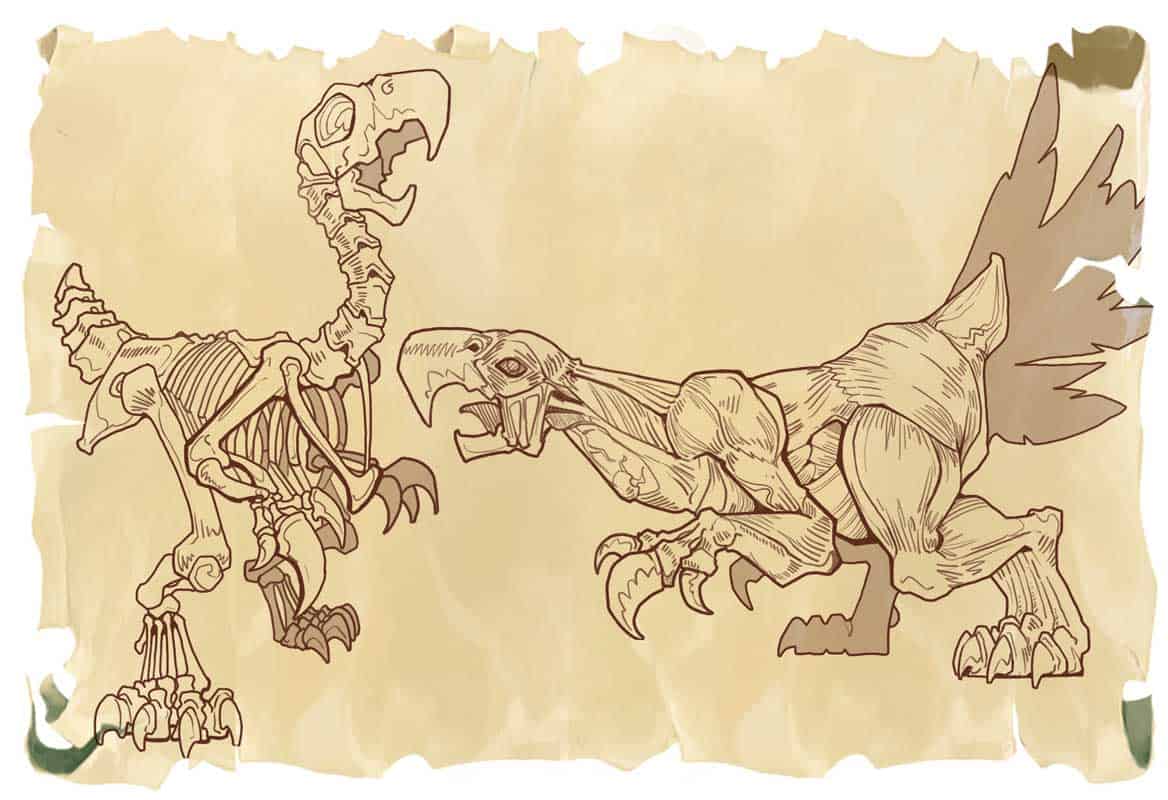
They indeed have enemies such as jackals or gnolls, and they barely could get along with each other. A lone oronox normally cannot fend off multiple attackers at once, but I saw how four oronoxes together defeated a gnolls pack, killed a lot of them and driven out the rest.Knowledgeable local people argue oronoxes live 20-25 years and after moulting in an age of 3 years they are considered an adult.Similar to birds, oronoxes lay eggs. Their eggshells have sandy gray color, which also makes them unnoticeable within the sands for possible intruders.
Mating season occur in sandstorm season in the desert. Males get into fights with each other but it never leads to death and rarely to blood. A defeated male oronox still has a chance to find a female if there will be anyone left. A «winner» has a choice between several females as it attracts them by its plumage and strength, but it never courting more than four females, and usually, there are only one or two.
An oronox female brings only one egg a little bit burying it in the sand and flipping it from time to time to keep it warm. During this period all oronoxes keep close to the nest as they are constantly watching over the egg.
During sandstorm seasons adults are digging deepen where they put cubs and cover themselves up.They cling to soil and hold cubs on their paws. Interesting fact – despite sandstorm oronoxes leave eggs, because eggs pretty well survive ghastly weather on their own, and once it blows over, adult oronoxes dig eggs up from excess sand.
Taming and using
Oronoxes are intelligent enough to give in to taming.
Desert people use them for race and animal fights, not knowing their real capabilities.
Glorious knights of the Temple Order cognized that capability and founded an entire unit of Oronox Knights.
Collected from nearby nests of the fortress Oronox, these creatures were trained to carry riders with a saddle. Adapted to run on sands and other difficult areas by nature, oronoxes prevail over regular horses which are not so hardy to carry a knight in heavy armor, and oronoxes, besides everything else wear heavy armor too.
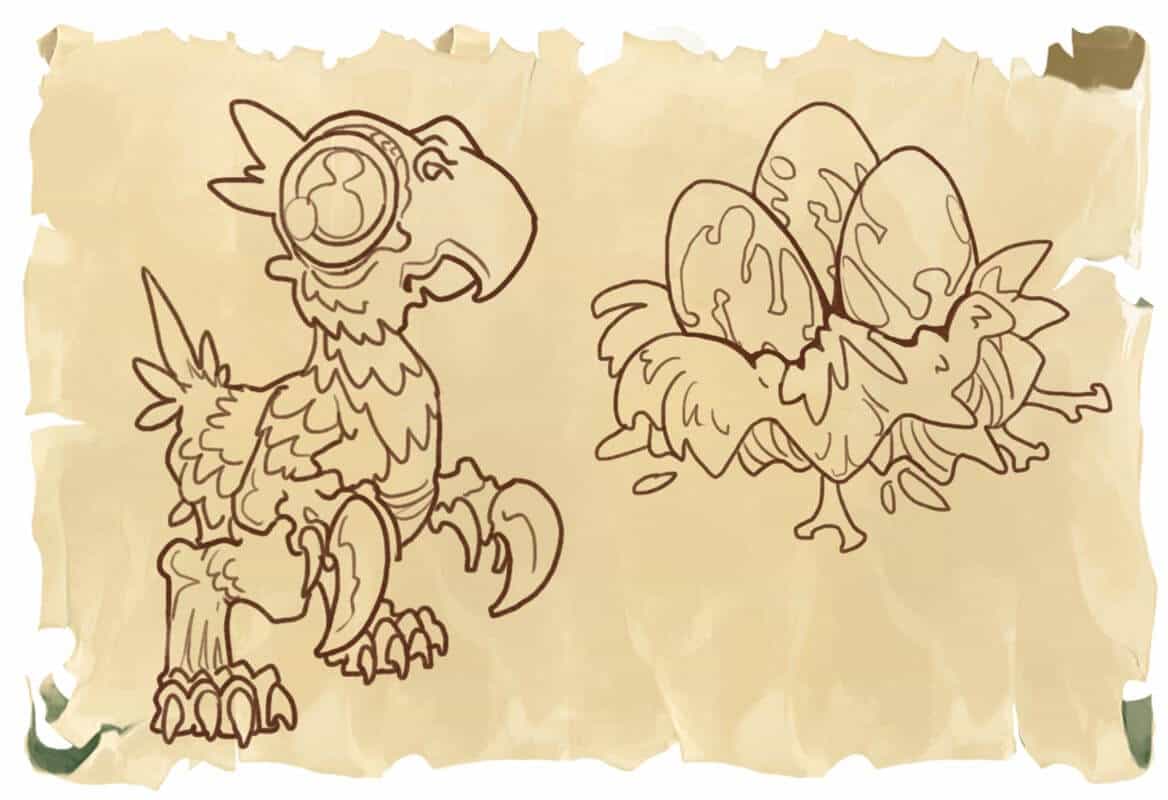
Oronoxes’ uniform was designed empirically by a gunsmith of the fortress Oronox together with the very first riders – Konstantin Rakibon and Vincent the Stone Cold.I was told that initially there was a huge debate about what would be better to tame – oronox males or females. Females, in fact, more easygoing and calm, but weaker and more stubborn. Males, for their part, are smarter and stronger, capable of learning of necessary maneuvers, but they are very aggressive and sometimes unpredictable. Eventually, they decided that rider just choose oronox who liked a particular master no matter their gender.
Well-trained oronox is perfect in a battle at close range – besides it is already a dangerous weapon with its claws and beak, oronox is also hardy and quick.
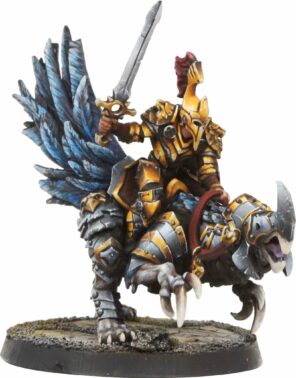
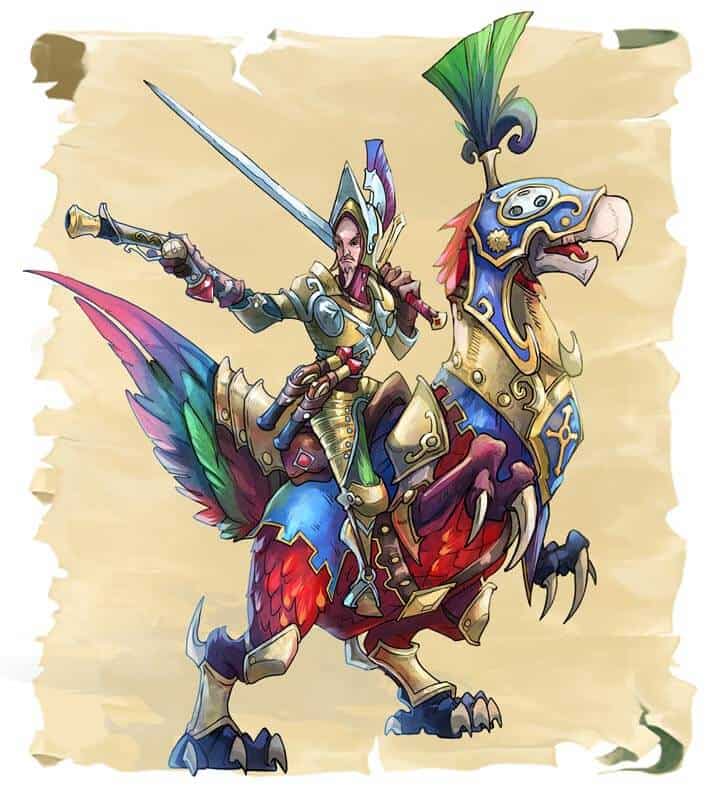
The way oronox moves requires a rider to have special agility and makes it difficult to use lances and long swords, therefore Oronox knights are the most skilled knights of the Empire.
And those who didn’t manage to learn the skills of a knight fight were armed with pistols. Even so, though that creature is little deaf, it gets scared of loud noise, that’s why in order to protect ears of oronoxes, smiths make special felt ear defenders, and such oronoxes undergo special extra training activity that makes them more resistant to loud noise.
Export to the Empire
Encouraged by successful training and breeding of oronoxes made by Templars order, I decided to follow up on how things are going in the Empire as I certainly know that some knights, mostly young ones, used to bring either adult oronoxes or their eggs from overseas.
However, upon return to the Empire, I was a bit disappointed. As it happens, the temperate climate of the continent turned out to be too cold for these creatures. This problem didn’t affect mature oronoxes at first as they are used to cold desert nights, but younger species felt cold and became ill. In addition, they were very vulnerable owing to their color that indeed helped the cubs to hide in the sands but became ineffective for green forests and fields. So, unfortunately, they were visible enough to get killed by wolfs, bears, bobcats, and even feral dogs which see easy prey in these new for the continent species.
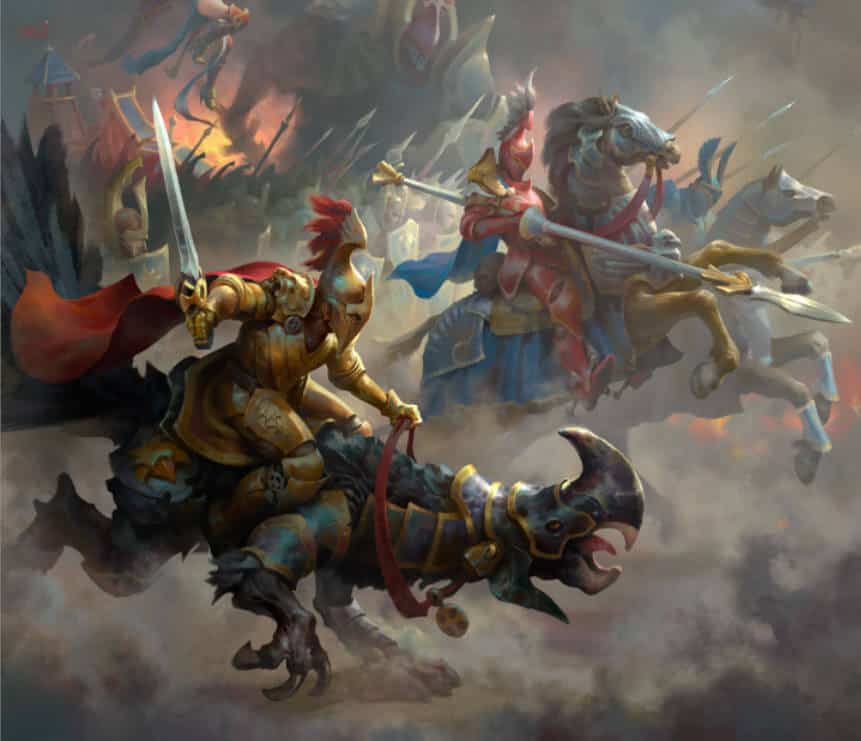
Another issue observed was when the Older Sun Calikhorm was at its highest point, which started a sandstorm season in Sakhara, but here on the continent most of the oronoxes haven’t started mating season at all, and the reason for this was probably much colder temperature. Those who anyway produced offspring surprisingly abandoned their eggs and didn’t care about it at all.These eggs no matter they were produced already here or brought from across the sea didn’t grow. People tried to keep them warm using a sand, open fires, or hot stones, but it only got fried and didn’t work.
However, some people say they managed to warm one oronox egg using hot stones, albeit it required a lot of efforts and constant control, and the newly hatched cub was weak and sickly – nothing in common with that fearsome beast in Sakhara; that cub eventually died unable to withstand the stress.
Although Oronox riders embody a powerful and destructive force in their homeland in the desert, there are only a few of them left on the continent. Ornoxes are brought adults and people don’t try to grow them up here anymore. Transportation is also a difficult process, this is also a reason the Empire barely uses them on the continent.
Currently, mainly youth want to become oronox riders as younger people and women are more agile and faster learn specificity of riding, while experienced older knights, being already grey-haired and famous prefer to use good old special breeds of horses.
That’s the nature of oronoxes.
It’s me, Latis Vetalar, who wrote this research based upon what I saw and heard from knowledgeable sources.






